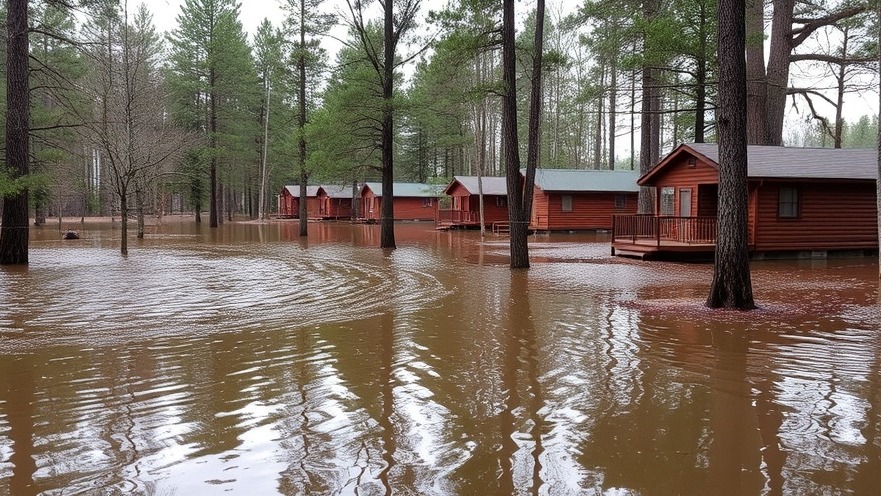
Summer Camps in Flood Zones: A Growing Concern
The alarming rise in summer camps constructed in flood-prone areas has become a pressing issue, especially following the devastating July 4 flooding in Kerr County that tragically claimed 27 lives, most of whom were children. This event has sparked renewed scrutiny over the safety of summer camps along the Guadalupe River, where over a dozen established camps exist within hazardous flood zones.
Decades of Development Without Regulation
Many of these camps were established decades ago, long before modern flood modeling and safety regulations were in place. This lack of foresight raises serious questions about the safety protocols employed at these sites. As it stands, counties possess limited authority to impose regulations on construction within floodplains, resulting in camps like Camp Mystic—where many casualties occurred—operating in inherently dangerous conditions.
Understanding Floodplain Risks
According to experts, including Syracuse University’s Sarah Pralle, the phenomenon of overbuilding in flood-prone areas is widespread across the United States. She emphasizes that summer camps present a unique risk as they house vulnerable populations of children, amplifying the need for urgent reassessment of safety measures. Camp Mystic, for instance, is located in the river's floodway, categorized as the most hazardous area during flooding events, while other camps have structures within the 100-year floodplain. Notably, five camps, including Mystic, have more than one-third of their facilities in these risky flood zones.
Outdated Risk Assessment Models
The FEMA flood maps, which guide many local governments, are often criticized for being outdated and not reflecting current climatic conditions. The data underpinning these assessments have not adapted to increased rainfall due to climate change, meaning the perceived safety of these flood plains may be illusory. New modeling techniques are essential to accurately understand the flood risks associated with these camps, ensuring that the safety of children and other campers is prioritized.
Specific Camps at Risk
In addition to Camp Mystic, several other camps identified as being partially in the floodplain include Heart O’ the Hills Camp, Camp Capers, and Camp Waldemar. Some camps, like Camp La Junta, successfully evacuated campers during the flood without injury, highlighting the stark differences in disaster preparedness across facilities. However, significant damages were reported at camps like Camp Rio Vista and Camp Sierra Vista due to the flooding, underscoring the pervasive risk.
A Call for Change and Improved Safety Standards
The recent events call for urgent dialogue among camp owners, local governments, and safety authorities to develop more stringent building regulations and modernize existing safety frameworks. It's crucial to balance the charm of summer camps, a staple of many childhood experiences, with the necessity of ensuring their safety against the growing threats of climate change. As the community evaluates these risks, the emphasis must remain on the well-being of the children and staff at these camps.
Common Misconceptions About Flood Zones
A prevalent misconception is that living or operating in a recognized floodplain guarantees safety if one adheres to the existing regulations. However, as recent events have demonstrated, conditions can change rapidly, and the effectiveness of old safety standards is often inadequate in facing modern flood challenges. Understanding flood zone designations and their implications is essential for camp directors and parents alike.
Future Outlook: Preparing for Climate Change Impacts
Moving forward, transparency and proactive measures should guide the construction and management of summer camps. It's vital for prospective campers and their families to be aware of these risks and for camp operators to provide clear communication about safety strategies. Only through collaboration and informed decision-making can we work towards safer environments for our children, ensuring that summer camps remain a cherished experience rather than a perilous one.
As Texas faces increasing climate volatility, examining these flood risks is more urgent than ever. It’s imperative for parents, camp organizers, and local authorities to take proactive steps in addressing these responsibilities. Strong regulations and community awareness can help safeguard the future of summer camps along the Guadalupe River.
 Add Element
Add Element  Add Row
Add Row 



Write A Comment